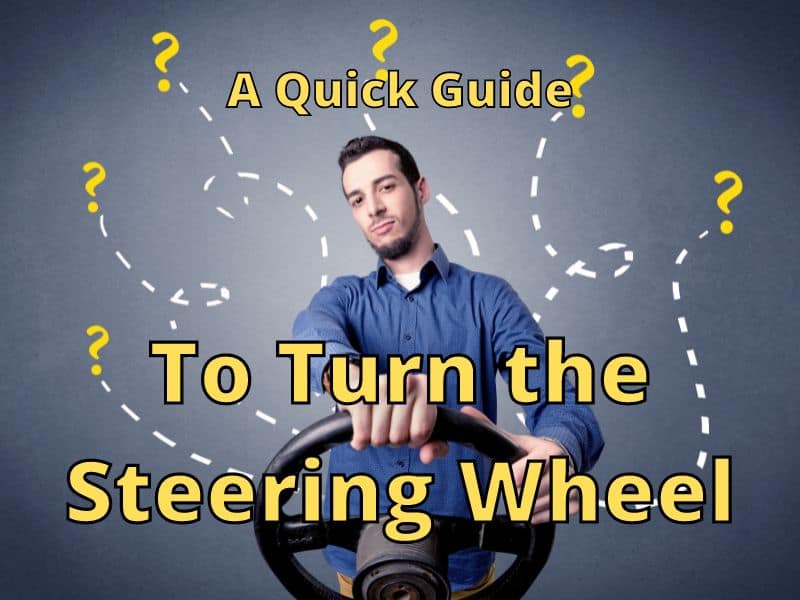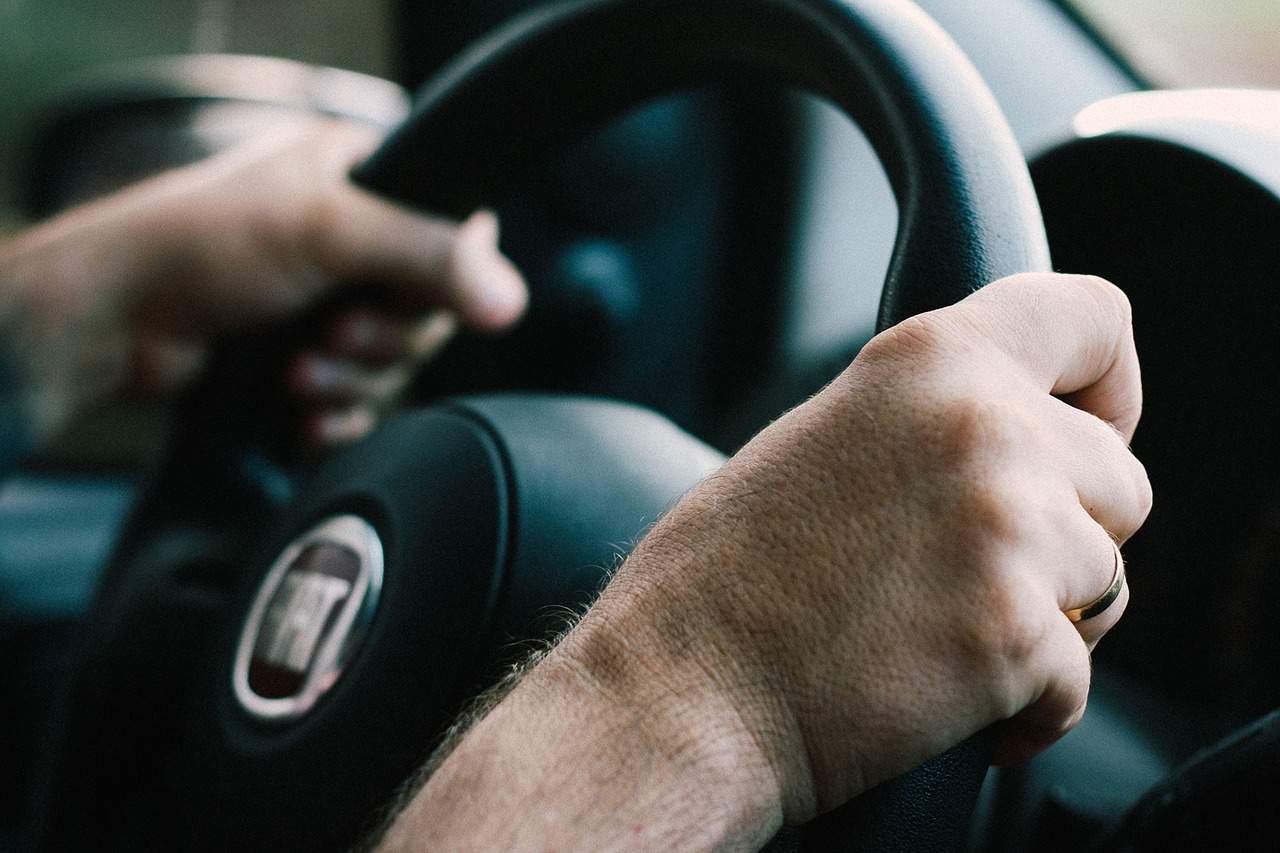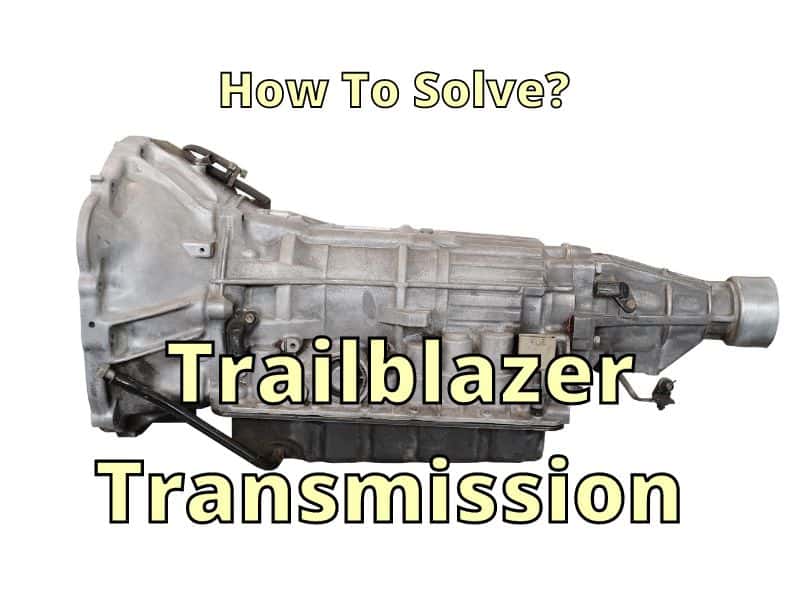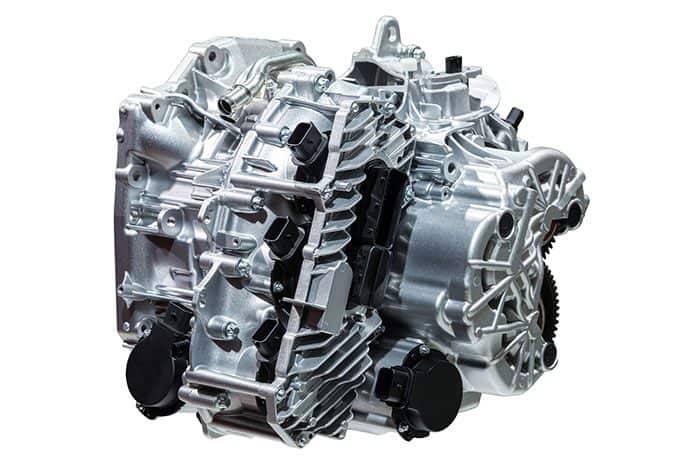I tend to clean my car when it needs it. Sometimes I wait too long, and dirt can get ground into the carpet, and spills are more difficult to remove. There are a few tips that I’ve learned to help me when I need to clean my truck and make it look beautiful again.
When cleaning a car, one of the most important tips to help you is having access to everything you need when you need it. That means having a vacuum available and cleaning products on hand when needed. Here are some basic tips that will help you:
- Organize your supplies.
- Use your home vacuum cleaner.
- Use good conditioning spray or liquid.
- Clean your steering wheel regularly.
- Clean your car’s mats regularly.
As I’ve cleaned my truck over the years, I’ve found that being organized and having what I need for the job available makes all the difference. If you have a car, you plan to keep it for more than a year, or you lease your car, keeping it clean can make all the difference for resell value and your personal sense of happiness.
Tips for Organizing Your Supplies

Keeping organized can make the difference for me between cleaning and not cleaning my car. I need to be able to find the items I need easily, so I can get the job done within the time I have planned. An organized area for your car cleaning products will likely help you feel more capable and ready to tackle the challenge.
Some people have a garage set up for all their tools and car cleaning supplies, and storage. If your garage is like mine, you may not have room for your car or just about anything else. What should I do with little space available?
My solution was to buy shelving, so I could stack items and then place all the car cleaning supplies together in containers so I know exactly where things were. Here are some things you might want to try:
- Store cleaning supplies in a plastic bin with a lid so that if a spill occurs, nothing leaks out.
- Store similar products together. If you have a big box with cleaning items, use smaller containers to organize items within the box, so you can find items easier.
- Clean out items that you no longer need and sell them or give them away. If you’re committed to getting organized, you’ll be willing to part with items that no longer serve you.
- Sometimes we buy an item because it sounds like a great item to have, but then we end up using them only once or twice. Next time you want to buy something, consider if you will use it and really need it.
- Do your research before buying products and find the best one you can afford, so you don’t need to buy another one soon after.
Tips for Cleaning with Your Vacuum

Whether you go to a car wash center or vacuum your car at home, vacuuming can make all the difference between feeling like you have a dingy old car or a freshly clean car.
Sometimes a deep cleaning is needed in order to get some stains out and remove all the debris that has accumulated over the months.
Your pride in ownership will start to show when you have a nice car to drive each day, and you’ll likely have a more positive feeling while driving a freshly cleaned car.
Here are some tips that can help you achieve that clean car interior a bit easier:
- When I used a hand vacuum, it wasn’t powerful. I didn’t have a shop vac, so I used my home vacuum cleaner, and it worked really well. If your vacuum is good but doesn’t have a long enough cord, decide if investing in an extension cord is right for you.
- Take everything out first. I do this so I don’t accidentally suck items into the vacuum that shouldn’t go into it. I remove all my mats and take out all the items from under the seat.
- I think the first thing all vehicle owners should consider before vacuuming is if they need a vacuum in the car at all times. When you have children or are prone to spilling liquids, having a small wet-dry vacuum can be a lifesaver.
- If you have a handheld vacuum in the car, consider all the places you can store it. Sometimes storing items in a seat back organizer works for some people.
- Consider using a nailbrush or hard bristle scrubber to help comb out and relax carpet fibers, so that ground in dirt can be lifted easier with your vacuum. Some people will use a penny and pull the edge over the carpet to quickly help fluff up compressed areas.
- For matted carpet, place a damp cloth on the matted area and iron over the damp cloth for half a minute. After ironing the area, vacuum the fibers. This can help loosen carpet fibers, so they look fluffy again.
Tips for Cleaning the Plastic, Vinyl, and Rubber

While plastics, rubber, and vinyl areas inside your car are likely to last a long time, protecting them with a good conditioning spray or liquid will keep them looking new and lasting much longer.
Your car can be protected much better if garaged or placed out of the sun. Weathering can impact the exterior and interior of your car. Adding a protective layer against heat, dryness, and the sun can help your car weather the elements better.
It’s amazing how you can make a dirty car look new again with a bit of effort. Here are some tips that can help you protect your car’s plastic, rubber, and vinyl interior:
- While plastics, rubber, and vinyl areas inside your car are likely to last a long time, protecting them with a good conditioning spray or liquid will keep them looking new and lasting much longer.
- Keep your conditioner and cloth together, so you can use them the next time you need them. A one-gallon zip lock bag can come in handy for storing products and cloth together.
- Use a product that is meant for conditioning, not cleaning. Make sure it has UV protection and can work on all three surfaces. (Amazon Link)
Tips for Cleaning Your Steering Wheel

A steering wheel is important to keep clean as well as easy to grip. Some sprays that help clean other plastic and vinyl areas leave a slippery surface that is hard to hold.
Be sure to keep your steering wheel clean to prevent the spread of germs and protect it so it looks and lasts for a long time.
Here are some tips that can help you achieve your goals:
- Using soap and water with a microfiber towel is a good idea when you don’t have cleaning or conditioning products available. Be sure not to use water on a leather interior unless you have a conditioner to place on it soon after.
- Be sure to try cleaning and conditioning products on other surfaces first to make sure they are not slippery when dry.
- Some steering wheels will need a thorough cleaning before they are conditioned. Be sure to have a microfiber towel or a scrubbing cloth.
Tips for Cleaning Mats

When taking care of your car’s carpet, your car’s mats will do a great job. If you clean them regularly, your car will be able to handle plenty of dirty situations.
The mats can be an effective guard against water, snow, dirt, and food. If you replace your mats with something sturdier and waterproof, your carpet will likely look great for the life of your car.
Here are some tips for maintaining your mats:
- It’s easy to clean carpet mats once a week if you want your car to look cleaner. Just take them out and hit them against a solid wall or driveway to remove particles. This only takes a few minutes if done regularly. Better yet, keep a rechargeable handheld vacuum in your car and vacuum the mats for a minute each week.
- If you have a newer car, one option that I’ve used is to replace the original mats with a cheaper version. This way, I can keep the car’s carpet looking good and keep the original mats in perfect condition by storing them until I resale the car.
- Another idea is to purchase easy-to-maintain mats (usually made with thick rubber or plastic), so you can wash them off and place them back in the car right away. Carpet mats can stain and take a while to dry if washed off.
Tips for Cleaning Time Management

We all have a limited amount of time and energy to accomplish our goals, and cleaning our cars may not be our top priority. It’s important to put things into perspective when it comes to using our time for cleaning our vehicle and deciding the value it holds for us.
Some things to consider are the ability to take time regularly to maintain your vehicle, the cost of DIY cleaning vs. having someone else clean your vehicle, the resale value when kept clean, and how you feel when driving your car when it looks and feels clean.
If you have decided on a way of cleaning that works best for you, you can set a regular schedule for cleaning so that you can accomplish your goals. Here are some ideas you may want to try:
- Take bite-sized efforts to get your goals meet. If you’re like me, you may feel overwhelmed at the thought of cleaning your car for an hour. So break up the process and commit to only 10 minutes, and agree with yourself that whatever you get done is fine. You may also decide to commit to one section, such as just cleaning the dashboard.
- Have someone else clean your car every six months, so your car gets a deep clean and improves the feel and resale value of your car.
- Set a date on the calendar and keep a regular monthly day to clean the car and push everything else back, so they take second priority.
- Don’t wait to clean up trash. Clean any trash in the car whenever you get out of the car and have a trash can readily available.
- Organize your vehicle after work for one minute before you get on the road.
- Keep wet wipes in your car and clean up any sticky or dirty areas before leaving the car each day.
- Group up on cleaning. Ask a friend or family member to help you clean. You can switch off helping each other.
- Set a timer and stop cleaning when it goes off. Plan on another time to clean if you don’t finish.
- Take a photo. When you look at your phone photos, you can get a reminder of what you want to clean, and after you’re done, you can take a photo to feel a sense of accomplishment.
Time Task Chart
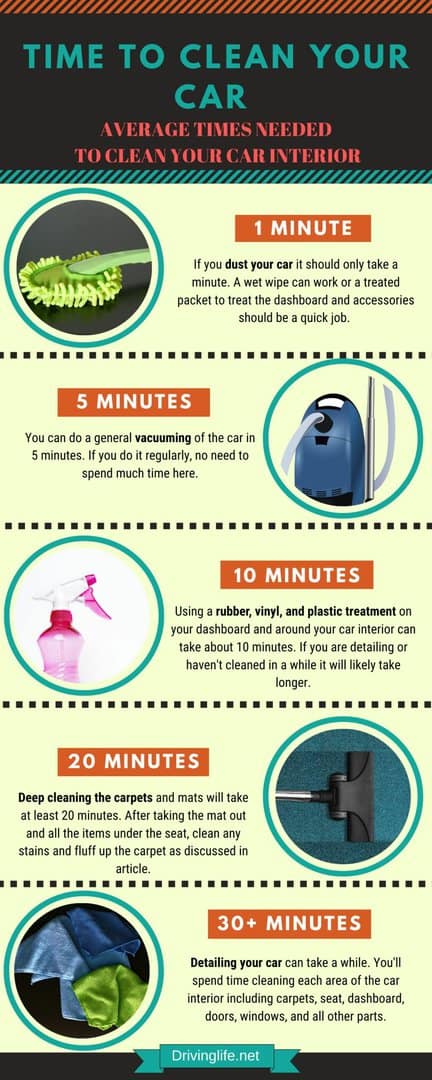
Starting with smaller tasks on our car can be easier until we are more motivated to do larger tasks.
Remember not to buy any new car cleaning gadgets until you have at least regularly committed to cleaning your car for about 5 minutes each week. Larger tasks can seem daunting, and that new gadget may go unused for years.
Try starting small and getting some tasks done regularly, and you will start to feel a sense of accomplishment as you complete tasks that are easier to achieve.
Conclusion
When cleaning your vehicle, it helps to have a plan of action to know what to do and how long it will take. If you are organized, this will improve your chances of creating a good experience, and you’ll have the supplies you need available.
Starting small can be helpful. Try a task this weekend to help your car look its best.
I hope you can achieve your cleaning goals, whatever they are. To learn more about cleaning your car, check out this article – 12 Common Car Cleaning Mistakes That You Can Avoid.

















